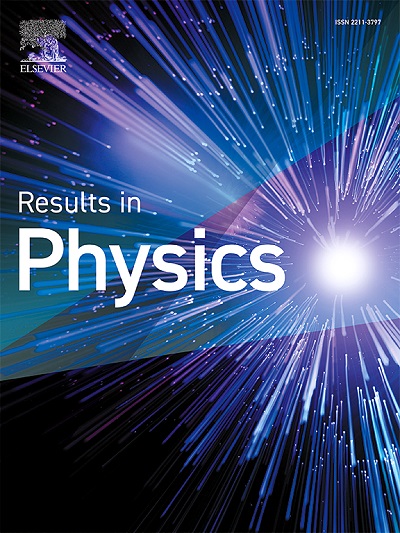The properties of fluorine-doped graphene-based intermediate band solar cell materials
IF 4.4
2区 物理与天体物理
Q2 MATERIALS SCIENCE, MULTIDISCIPLINARY
引用次数: 0
Abstract
The impact of carbon atom concentration to the band structure of intermediate band material which made of one fluorine atom doped graphene are researched by first-principles calculations. After geometry optimization, the fluorine atom protruded from the graphene plane gone through a deformation of Jahn-Teller. The formation energies are small indicate that the configurations are stable. By calculating the band structures of four doping models, we found that the 4 × 4 × 1 graphene supercell doped with one fluorine atom which carbon concentration is 3.125 % has more ideal intermediate-band structure. As can be seen from the optical absorption spectrum, there are three distinct absorption peaks appear from the complex. The two sub-band gap absorption on the left are attributed to the combined effect of the electron transition from the top of the valence band to the intermediate band and from the intermediate band to the bottom of the conduction band, while the large absorption peak on the right is due to the electron transition from the bottom of the conduction band to the top of the valence band. The reason for this phenomenon should be that the polarity of C-F bonds is much larger than that between C-C bonds, and the doping of fluorine atoms causes the charge transfer between atoms, resulting in the opening of the graphene band gap and the introduction of the intermediate band.
求助全文
约1分钟内获得全文
求助全文
来源期刊

Results in Physics
MATERIALS SCIENCE, MULTIDISCIPLINARYPHYSIC-PHYSICS, MULTIDISCIPLINARY
CiteScore
8.70
自引率
9.40%
发文量
754
审稿时长
50 days
期刊介绍:
Results in Physics is an open access journal offering authors the opportunity to publish in all fundamental and interdisciplinary areas of physics, materials science, and applied physics. Papers of a theoretical, computational, and experimental nature are all welcome. Results in Physics accepts papers that are scientifically sound, technically correct and provide valuable new knowledge to the physics community. Topics such as three-dimensional flow and magnetohydrodynamics are not within the scope of Results in Physics.
Results in Physics welcomes three types of papers:
1. Full research papers
2. Microarticles: very short papers, no longer than two pages. They may consist of a single, but well-described piece of information, such as:
- Data and/or a plot plus a description
- Description of a new method or instrumentation
- Negative results
- Concept or design study
3. Letters to the Editor: Letters discussing a recent article published in Results in Physics are welcome. These are objective, constructive, or educational critiques of papers published in Results in Physics. Accepted letters will be sent to the author of the original paper for a response. Each letter and response is published together. Letters should be received within 8 weeks of the article''s publication. They should not exceed 750 words of text and 10 references.
 求助内容:
求助内容: 应助结果提醒方式:
应助结果提醒方式:


